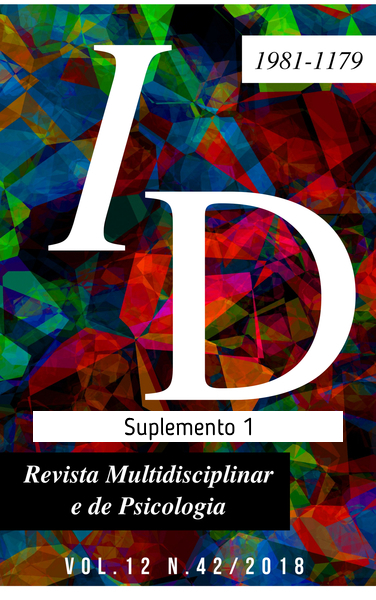Marketing digital e os digital influencers: Breves comentários acerca dessa ferramenta e de sua eficácia na divulgação de bens e serviços
DOI:
https://doi.org/10.14295/idonline.v12i42.1414Palavras-chave:
Marketing, Digital influencers, Comunicação.Resumo
Resumo: o marketing digital tem se apresentado como ótima ferramenta para transações no mercado econômico. Um dos motivos dessa importância está relacionado ao aumento significativos das plataformas de comunicação online, para mais de 20% em 2013, refletindo na desvalorização de revistas e jornais impressos. Nesse novo cenário, com redes sociais, as pessoas tendem a se agruparem em comunidades com interesses semelhantes. Um dos líderes de junção de pessoas em uma mesma comunidade, são os digital influencers (influenciadores digitais), que são verdadeiros formadores de opiniões e tem sido amplamente utilizados como forma de marketing digital. Este artigo discute, com base na literatura especializada, o marketing digital. conclui-se que é fundamental o investimento no marketing digital, para fins de acompanhamento e adequação à era digital, como oportunidade de promoção de marcas e produtos e, fortalecimento de relacionamento com os clientes através dos digital influencers.
Downloads
Referências
ALBUQUERQUE, P.; PAVLIDIS, P.; CHATOW, U.; CHEN, K.Y.; JAMAL, Z. Evaluating promotional activities in an online two-sided market of user-generated content. Marketing Science, 31 (3), pp. 406-432, 2012.
ALMEIDA, M.I.S; COELHO, R.L.F, CAMILO JÚNIOR, C.G.; GODOY, R.M.F. Quem lidera sua opinião? Influência dos Formadores de opinião digitais no Engajamento. RAC - Revista de Administracao Contemporanea. 22.1, January-February, p. 115, 2018.
CASTRO, I. V; SANTOS JÚNIOR, C. D. "O que gerencio e de quem dependo?": Determinantes da acao de blogueiros. Revista de Administracao Contemporanea, 19(4), 486-507, 2015.
CHEN, Y.; FAY, S.; WANG, Q. The role of marketing in social media: How online consumer reviews evolve. Journal of Interactive Marketing, 25 (2), pp. 85-94, 2011.
CHEREDAR, T. At peak, Amazon sold a whopping 306 items per second in 2012. 2012. Disponível em: < https://venturebeat.com/2012/12/27/at-peak-amazon-sold-a-whopping-306-items-per-second-in-2012/>. Acesso em 10/10/2018.
CLAY, K. A Amazon tem a melhor temporada de férias de todos os tempos, vendendo 306 itens por segundo. Website da Forbes, 2012. Disponível em: < https://www.forbes.com/sites/kellyclay/2012/12/27/amazon-has-best-holiday-season-ever-selling-306-items-per-second/#6063a36c1e1f>. Acesso em: 08/10/2018.
DE VRIES, L; GENSLER, S; LEEFLANG, P.S.H. Popularity of brand posts on brand fan pages: An investigation of the effects of social media marketing. Journal of Interactive Marketing, 26 (2), pp. 83-91, 2012.
DHOLAKIA, UM; DURHAM, E. One café chain’s Facebook experimente. Harvard Business Review, 88 (3) (2010), p. 26, 2010.
ECK VAN, P.S.; JAGER, W.; LEEFLANG, P.S.H. Opinion leaders’ role in innovation diffusion: A simulation study. Journal of Product Innovation Management, 28 (2), pp. 187-203, 2011.
FLYNN, L.; GOLDSMITH, R. E.; EASTMAN, J. K. Opinion leaders and opinion seekers: Two new measurement scales. Journal of the Academy of Marketing Science, 24(2), 137-147, 1996.
GODES, D. SILVA, JC. Sequential and temporal dynamics of online opinion. Marketing Science, 31 (3), pp. 448-473, 2012.
HOFFMAN, D. L.; NOVAK, T. P. Marketing in hypermedia computer-mediated environments: Conceptual foundations. Journal of Marketing, 60(3), 50-68, 1996.
HOLLEBEEK, L. D.; GLYNN, M. S.; BRODIE, R. J. Consumer brand engagement in social media: Conceptualization, scale development and validation. Journal of Interactive Marketing, 28(2), 149-165, 2014.
HUSSON, T.; ASK, J.A.; OVERBY, C.C.; PARRISH, M.; MULLEN, A.; MCCARTHY, J.C.; ROBERGE, D.; KWAN, E. 2013 Mobile trends for marketers. Forrester , 2013. Disponível em: < https://go.forrester.com/blogs/13-02-14-2013_mobile_trends_for_marketers/>. Acesso em: 08/10/2018.
IINTERATIVA. Infográfico--Por que investir em influenciadores digitais? Disponível em: < http://www.iinterativa.com.br/infografico-por-investir-em-influenciadores-digitais/>. Acesso em: 08/10/2018.
KAPLAN, M.; HAENLEIN, M. Users of the World Unite. The Challenges and Opportunities of Social Media, Business Horizons, 53, pp. 59-68, 2010.
KEE, R. The sufficiency of product and variable costs for production-related decisions when economies of scope are present. International Journal of Production Economics, 114 (2), pp. 682-696, 2008.
KUMAR, V.; GUPTA, S. Conceptualizing the evolution and future of advertising. Journal of Advertising, 45(3), 302-317, 2016.
LU, L.; CHANG, W.; CHANG, H. Consumer attitudes toward blogger's sponsored recommendations and purchase intention: The effect of sponsorship type, product type, and brand awareness. Computers in Human Behavior, 34, 258-266, 2014.
LUSCH, R. F. Marketing's evolving identity: defining our future. Journal of Public Policy & Marketing, 26(2), p. 261-268, 2007.
MANCHANDA, P; DUBÉ, J.P.; GOH, K.Y.; CHINTAGUNTA, P.K. The effect of banner advertising on Internet purchasing. Journal of Marketing Research, 43 (1), pp. 98-108, 2006.
MAYZLIN, D; YOGANARASINHAN, H. Link to success: How blogs build an audience by promoting rivals. Management Science, 58 (9), pp. 1651-1668, 2012.
SORESCU, A; FRAMBACH, RT; SINGH, J; RANGASWAMY, A; BRIDGES, C. Innovations in retail business models. Journal of Retailing, 87S (1), pp. 3-16, 2011.
SCHULTZ, D. The future of advertising or whatever we're going to call it. Journal of Advertising, 45(3), 276-285, 2016.
UZUNOGLU, E.; KIP, S. M. Brand communication through digital influencers: Leveraging blogger engagement. International Journal of Information Management, 34(5), 592- 602, 2014.
VAN DOORN, J; LEMON, KN; MITTAL, V; NASS, S; PICK, D; PIRNER, P; VERHOEF, PC. Customer engagement behavior: theoretical foundations and research directions. Journal of Service Research, 13 (3), pp. 253-266, 2010.
VARGO, S. L.; LUSCH, R. F. Evolving to a new dominant logic for marketing. Journal of Marketing, 68(1), p. 1-17, 2004.
VERHOEF, P.C.; BECKERS, S.F.M.; VAN DOORN, J. Understand the perils of cocreation. Harvard Business Review, 91 (9), p. 28, 2013.
VERHOEF, P.C.; REINARTZ, W.J.; KRAFFT, M. Customer engagement as a new perspective in customer management. Journal of Service Research, 13 (3), pp. 247-252, 2010.
WILKIE, W. L.; MOORE, E. S. Scholarly research in marketing: Exploring the “4 eras” of thought development. Journal of Public Policy & Marketing, 22(2), p. 116-146, 2003.
WOOD, N. T.; BURKHALTER, J. N. Tweet this, not that: A comparison between brand promotions in microblogging environments using celebrity and company-generated tweets. Journal of Marketing Communications, 20(1/2), 129-146, 2014.
ZHANG, K; EVGENIOU, T; PADMANABHAN, V; RICHARD, E. Content contributor management and network effects in a UGC environment. Marketing Science, 31 (3), pp. 433-447, 2012.
Downloads
Publicado
Como Citar
Edição
Seção
Licença
Os autores detêm os direitos autorais sem restrições, devendo informar a publicação inicial nesta revista, em caso de nova publicação de algum trabalho.










